Five Roofing offer a wide range of specialized services as a Silverado, CA commercial roofer. Get comprehensive support for all your roofing needs. From initial inspections to repairs and replacements, we ensure top-tier craftsmanship and expertise. Whether it’s fixing leaks, storm damage, or general maintenance, our skilled team guarantees lasting solutions that keep your home secure and your mind at ease.
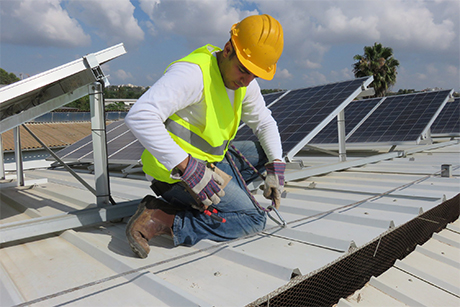
Commercial roof installation requires professional expertise. Experienced professionals assess your property, recommend suitable materials, and tailor a design to your needs. The process encompasses insulation, structural support, and waterproofing, all crucial for durability. Expert installation ensures a robust roof that safeguards your business and investment.
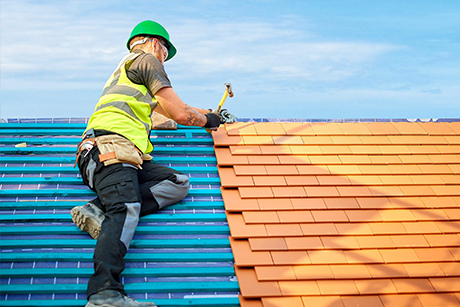
Commercial roof repair demands swift action and precision. We inspect for leaks, damage, and wear, diagnosing issues accurately. Repairs encompass patching, sealing, and replacing damaged materials. Ensuring the structural integrity of your roof safeguards your business, preventing further damage and maintaining a secure environment.
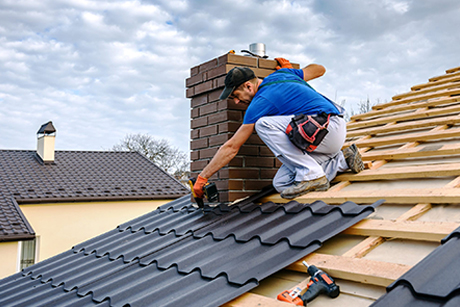
Commercial roof replacement is a strategic endeavor requiring careful planning. We help you assess the existing structure, recommend suitable materials, and execute the replacement with precision. The process includes removing old materials, installing new layers, and ensuring proper insulation and weatherproofing for a durable, energy-efficient, and secure roofing solution.
Get essential services in maintaining and repairing roofs for homes. Our expertise includes inspections, leak detection, shingle replacement, and overall roof restoration. From minor fixes to complete overhauls, we ensure structural integrity and weather protection, extending the life of roofing systems with skillful support.
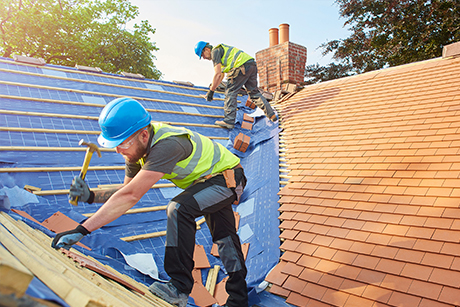
Residential roof installation offers a range of choices to suit your needs. Opt for classic asphalt shingles for cost-effectiveness and durability. Embrace the elegance of wood shakes for a rustic appeal. Consider metal roofing for longevity and energy efficiency. Each option provides unique aesthetics and performance, tailored to your preferences.
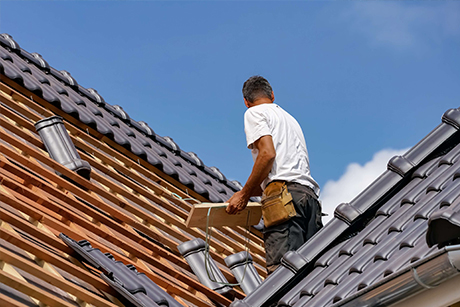
Residential roof repair presents versatile solutions for various issues. Fix minor leaks with sealants and patches for a quick remedy. Address shingle damage through focused repairs, ensuring consistent protection. Combat larger problems with comprehensive patching or partial re-roofing. Professional assessment guides you toward the best option, restoring your roof’s integrity effectively.
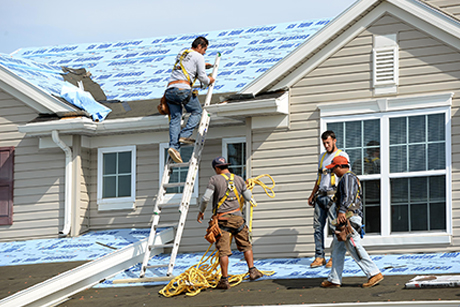
Residential roof replacement effectively addresses multiple concerns. It resolves persistent leaks and water damage, rectifies worn-out shingles, and improves energy efficiency. Additionally, it tackles structural issues, enhancing the overall appearance and value of your home. Professional replacement ensures a secure and attractive roofing solution, offering lasting peace of mind.
Every individual roof is different, and hence we offer customized solutions to our clients, focusing on the specific issue. Here is the overview of the processes that we follow in each case
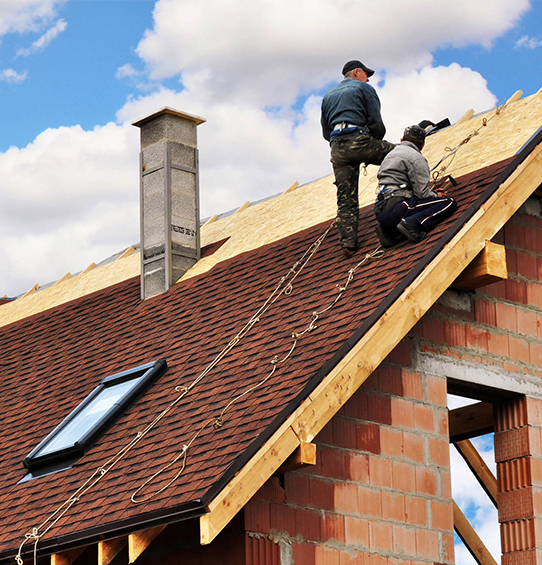
Consultation: Discussing roofing materials, design, and budget with the homeowner.
Measurement and Assessment: Taking accurate measurements of the roof and assessing the existing structure.
Material Selection: Helping you choose the appropriate roofing material based on the desired looks and functionality.
Preparation: Removing old roofing material, if necessary, and preparing the surface for installation.
Underlayment: Apply a weatherproof underlayment to create a barrier against moisture.
Roofing Installation: Placing and securing the chosen roofing material according to manufacturer guidelines.
Flashing and Ventilation: Installing flashing around chimneys, vents, and other protrusions. Ensuring proper ventilation.
Finishing Touches: Adding ridge caps, trim, and any necessary details for a polished appearance.
Clean-up: Thoroughly cleaning the work area and disposing of debris.
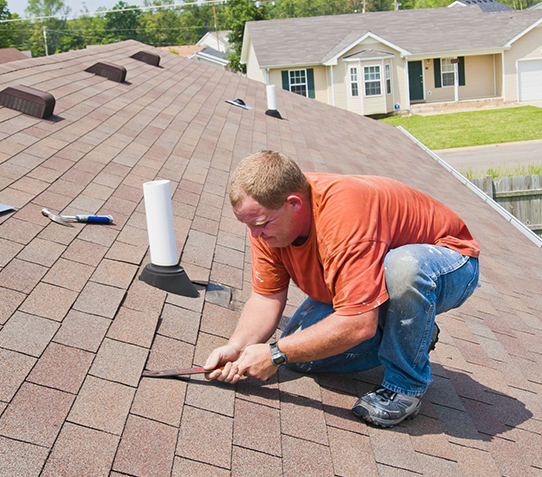
Inspection: Assessing the roof’s condition to identify the extent of damage and underlying issues.
Problem Identification: Locating leaks, damaged shingles, or other issues causing the problem.
Recommendation: Recommending the right repair options, including cost estimates.
Material Procurement: Getting the necessary replacement materials delivered.
Repair Work: Executing repairs, which may involve shingle replacement, patching, or sealing leaks.
Flashing and Sealant: Ensuring proper flashing installation and applying sealant as needed.
Quality Check: Verifying that the repairs effectively address the identified problems.
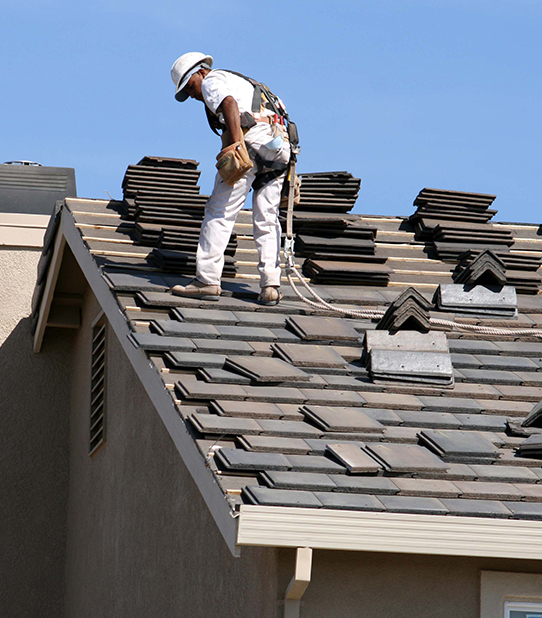
Initial Assessment: Things start by inspecting the roof’s condition to determine if replacement is necessary.
Material Selection: The material options, colors, and styles are discussed with the homeowner.
Estimation: You get a detailed cost estimate for the replacement project.
Scheduling: Setting a convenient time for the replacement process to begin.
Old Roof Removal: The old roofing material is carefully removed and disposed of properly.
Structural Inspection: Assessing the roof’s underlying structure for any damage or necessary repairs.
Underlayment and Installation: Applying a new weatherproof underlayment and installing the chosen roofing material.
Flashing, Ventilation, and Details: Ensuring proper installation of flashing, vents, and other components.
Final Checks: Checking that the new roof is secure, leak-free, and visually appealing.
Clean-up: Thoroughly cleaning the premises and removing all debris.
Proper roof slope ensures effective water drainage. Most residential roofs have a slope between 4:12 and 8:12, with steeper slopes aiding water runoff and minimizing pooling.
Roofing underlayment acts as a moisture barrier and provides extra protection. Common types include asphalt-saturated felt, synthetic materials, and rubberized membranes. The choice depends on factors like climate and roofing material.
Repairing vent pipe leaks involves resealing the flashing around the pipe. Remove damaged flashing, apply roofing cement, and secure new flashing properly to prevent water infiltration.
A sagging roof may indicate structural issues. Consult our team to assess the extent of the damage. Repairs might involve reinforcing the affected area with additional framing or trusses.
Damaged or deteriorated roof decking should be replaced to ensure a solid foundation for the new roofing material. Inspecting the decking’s condition during tear-off helps determine if replacement is necessary.
A complete tear-off involves removing the existing roofing material down to the roof deck before installing new materials. An overlay, also known as re-roofing, involves placing new roofing over the existing layer. Complete tear-offs offer a fresh start, while overlays are less disruptive and cost-effective if the existing roof is in good condition.
It is always recommended to follow the manufacturer’s guidelines and use the recommended number of nails per shingle, usually four for asphalt shingles. Nails should be positioned correctly along the shingle’s nailing strip to ensure secure attachment without overdriving.
Metal roofing panels require precise measurements, accurate alignment, and proper fastening techniques. Pay attention to the type of metal being used, as some metals expand and contract with temperature changes, necessitating allowances for movement.
BUR systems consist of multiple layers of asphalt and felt. Repair minor damage by cleaning the area, applying asphalt cement, and embedding a patch. More extensive damage might require removing and replacing damaged layers.
Ponding water can lead to roof deterioration. Address low areas by adding tapered insulation to promote proper drainage. Repair areas of roof degradation and ensure that the new insulation maintains the slope.
Planning and communication are crucial. Schedule the replacement during a period of minimal disruption, and coordinate with tenants or employees. Ensure safety measures are in place and work with the contractor to minimize disturbances.
Factors like climate, building design, budget, and maintenance requirements influence material selection. Options range from single-ply membranes (EPDM, TPO), modified bitumen, and metal roofing, to built-up roofing (BUR).
I am thrilled with the outstanding job done by Five Roofing when they installed a new roof and skylight in my home. Their professionalism and competence was exceptional from start to finish. The personnel were on time, efficient, and knowledgeable in their field.